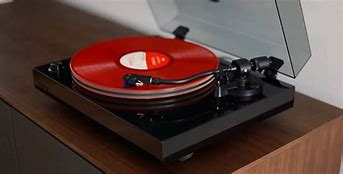You could have the best vinyl assortment around yet it will not really help you for sure without a dependable method for playing them. The turntable, which deciphers the notches of a record into a sound sign, is seemingly the most basic part in your sound framework. Regardless of whether you have a quality intensifier or recipient and incredible speakers further down your sound framework’s sign chain, they’ll possibly serve to precisely duplicate a shoddy sign in the event that you’re utilizing a bad quality source. Considering that, we’re suggesting a choice of the best turntables under $500 here that you can feel guaranteed will interpret those furrows so your framework plays the music how it was expected to sound.
Best by and large: Fluance RT85
The turntable contains a huge swath of choices, going from modest novice models to super costly gadgets worked for audiophiles. Here, we decided to zero in on what you could portray as the lower midrange of the market. We covered the costs at around $500 on the grounds that you can get a magnificent model to give the establishment to your sound framework. In any case, it’s still generally low contrasted with the $1,000 and higher turntables in the bad-to-the-bone audiophile market. We likewise left out sub-$100 turntables to keep the quality level at the lower part of the rundown in a decent spot. We considered many models and limited them to this rundown depending on private experience, client input, spec correlations, and article audits.
What to consider while looking for the best turntables under $500
You have a few choices priceless to make while purchasing a turntable. Do you need a belt-drive or direct-drive activity? A phono, line-level, USB, or Bluetooth yield — or a mix thereof? Programmed or manual activity? Do you believe that it should incorporate into your current sound system or would you say you are working without any preparation? Do you intend to DJ with your turntable? We’ll get into particulars on those issues here.
What are the critical pieces of a turntable?
The foundation of a turntable is known as the plinth. An ideal plinth is made of wood and is sufficiently thick to decrease the vibrations it gets from the surface on which it’s sitting. The engine and other hardware normally live inside the base. A turning chamber called the platter sits on top of the base and gives a stage to the record.
The tonearm appended to the base houses the cartridge and the pointer. The pointer is the needle that vibrates as it goes through a record’s furrows. The tonearm could conceivably have a prompt switch, which raises and brings down it from a distance. In the event that there is no prompt switch, the cartridge will have a little handle which you lift the tonearm on and in private.
At the point when the pointer contacts the sections of a turning record, it makes vibrations that movement to the cartridge, which intensifies them into an electrical sign. In a turntable with no preamp, that electrical sign goes to the turntable results and will require an outside preamp (either independent or in a recipient) to bring it up to line level. With an implicit preamp, the sign goes from the cartridge into the preamp, and the turntable results it at line level.
Is it genuine that implicit phono preamps are sub-par compared to outside ones?
Generally, you’ll get better quality by utilizing a different phono preamp or A/V recipient that incorporates one as opposed to an implicit preamp. Turntables with worked in preamps will quite often be less expensive than those without. An underlying preamp normally demonstrates less expensive parts in all cases. No self-regarding audiophile would approach a turntable with an underlying preamp, yet common audience members might think that they are thoroughly fine.
Inherent preamps make it conceivable to utilize a more modest framework — for instance, simply a turntable and a couple of controlled speakers (like the Klipsch The Sixes). They’re additionally vital on particular sorts of turntables, like ones with advanced yields (which require line-level signals) or models worked for DJs. Accordingly, four of the six turntables in this gathering have preamps implicit, albeit most proposition choices to sidestep them.
What’s the contrast between belt-drive and direct-drive turntables?
A belt-drive turntable has an engine that is contiguous the platter. The engine has a belt joined that circumvents the periphery of the platter and back. At the point when the engine turns, the belt moves, making the platter turn. The engine and belt might be noticeable or secret inside the base, contingent upon the turntable’s plan.
On an immediate drive turntable, the engine is situated under and joined to the focal point of the platter. At the point when the engine turns, the platter does, too.
The main benefit to a belt-drive turntable is that the engine is disengaged from the platter. Subsequently, the cartridge is less inclined to get machine commotion than on an immediate drive model where the engine is under the focal point of the record.
Nonetheless, direct-drive turntables can give more accuracy with regards to speed. Many have a quartz-lock highlight that controls platter speed with a quartz-gem oscillator to guarantee the record plays at the right, steady speed. Two of the turntables we’re covering here, the Sound Technica AT-LP120XBT-USB and the Reloop 4000 MK2, are immediate drive models, and both deal quartz-lock highlights.

